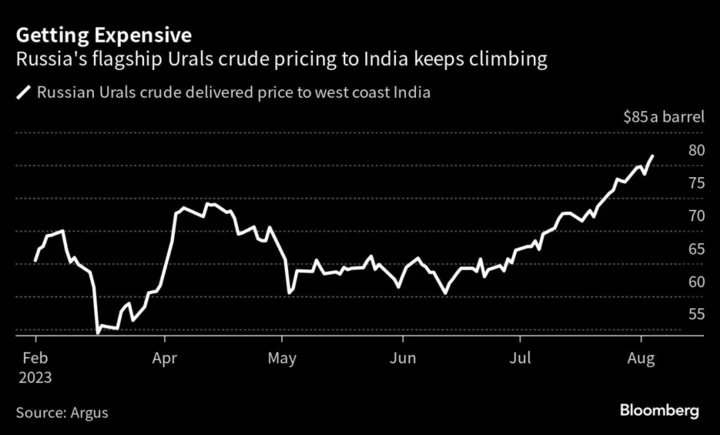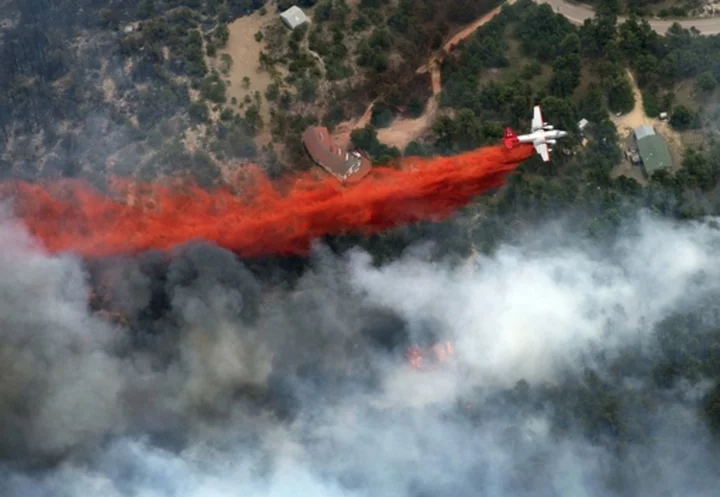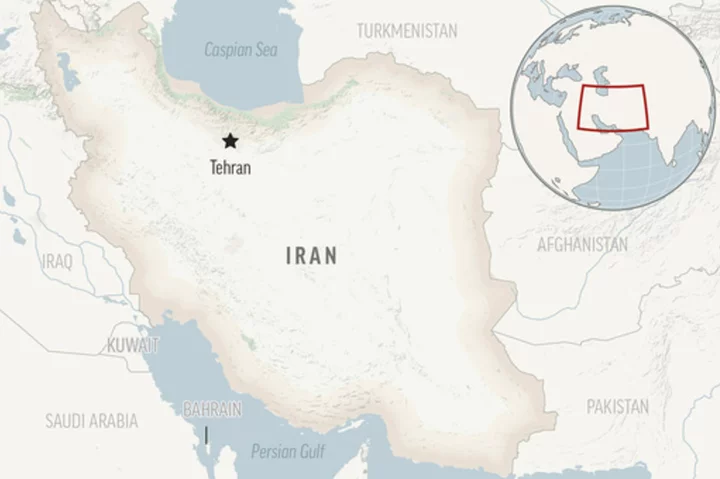Indian buyers, key consumers of cheap Urals crude since the invasion of Ukraine, have no plans to turn away from Moscow even as the discount to global benchmarks narrows, arguing Russian barrels remain among their most affordable options.
India’s consumption of Russian crude has soared since last year, with the country becoming a leading supplier, ousting Saudi Arabia and Iraq from the top spots. Much of that has been driven by price — and by Prime Minister Narendra Modi’s efforts to control energy inflation — but that dynamic is changing. Earlier this year, the gap between Russian crude and the Dubai benchmark stood at around $20 on a delivered basis. Today, the discounts offered for Urals cargoes are closer to $8.
Pricing data from Argus Media Ltd. puts Urals crude delivered to the west coast of India at above $81 a barrel on Aug. 4, compared with about $68 a month earlier.
Still, officials at four major refiners in India said they would continue purchasing Russia’s flagship Urals blend, arguing similar-quality barrels from the Middle East remain significantly more expensive. They asked not to be identified as the information is private.
That means India is buying more Urals barrels than many had anticipated.
“There was a perception that India had limited capacity to refine medium sour grade of Russian crude, which would create a natural ceiling on Russian imports,” said Samiran Chakraborty, chief economist for India at Citigroup Inc. “It has now been clearly demonstrated that such a bottleneck does not exist. This would imply that Indian refiners can continue with their Russian oil imports as long as discounts outweigh the higher logistics cost of imports.”
Absent an escalation of the current conflict that hampers deliveries, geopolitics are unlikely to change the picture.
Refinery executives largely shrugged off a drone attack on a Russian-flagged oil tanker. South Asian buyers have now been alerted to supply risks, said Viktor Katona, lead crude analyst at data intelligence firm Kpler, but they are also protected from the higher cost of freight and insurance, as the structure of India’s oil trade means those are covered by sellers of Russian crude.
Even increased trading headaches and scrutiny as Urals last month broke through the $60-a-barrel set by Western nations to curb Moscow’s revenue haven’t put off Indian processors — and won’t, while they can book vessels and settle payments, the refinery officials said.
“As long as there is any discount on Russian crude versus comparable grades on a landed basis, there will be demand for it in India,” said Vandana Hari, founder of Vanda Insights in Singapore. “If Urals is being assessed only slightly above the $60 cap, it may not be a deal-breaker for Indian refiners as long as the intermediaries can provide an undertaking to Indian banks, if needed, that the free-on-board price paid for the cargo was below the cap.”
The simple driver remains price. According to official figures, in June, the average cost of Russian crude landing on Indian shores including freight was $68.17 per barrel, the lowest since Moscow’s invasion of Ukraine. That compares with shipments from Saudi Arabia, which amounted to $81.78.
Oil futures are currently trading around a nine-month high on tight supply, with Saudi Arabia and Russia extending their voluntary curbs into September. That’s left global oil markets eager for more sludgy and sulfurous medium-sour crude similar to the Urals grade, at a time when Asia’s physical market also looks strong.
Solid returns from making fuels from crude oil are also offsetting the increase in crude costs, the officials said. Overall Asian refining margins have more than tripled from early July, according to Bloomberg Fair Value.
Granted, Russian crude import volumes have slipped from their record highs in the past few months and are forecast to decline further, according to Kpler — but that’s also because of seasonal impacts, specifically the monsoon, when demand typically falls. A rebound is set to follow.
“For China, there’s a buyer’s dilemma between Iranian and Russian oil. But for Indian refiners, Russian crude is by far the cheapest option,” Katona said. “Expect a deluge of Russian cargoes in India from October onwards.”
--With assistance from Jack Wittels.









